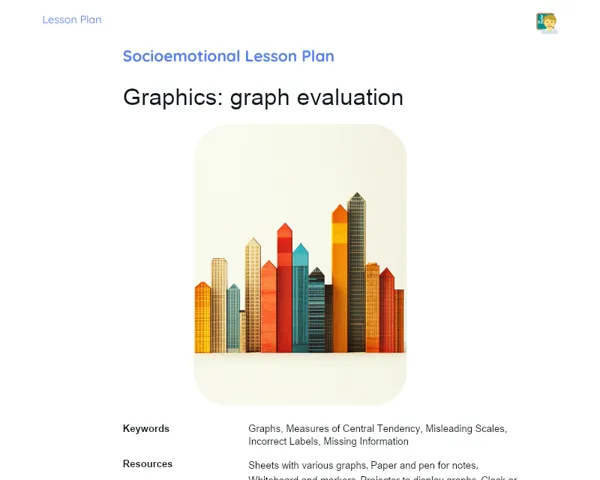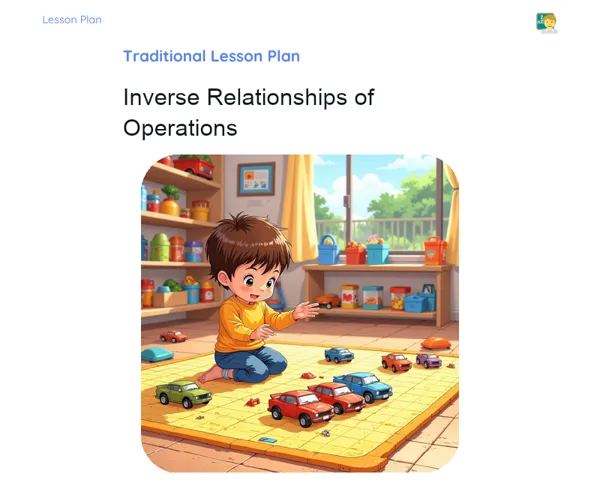Lesson Plan | Active Methodology | Area: Rectangle and Parallelogram
| Keywords | Area of Rectangles, Area of Parallelograms, Area Formula, Practical Applications, Area Calculation, Collaborative Activities, Critical Thinking, Student Engagement, Design and Agriculture Challenges, Theory-Practice Integration |
| Necessary Materials | Floor plan of a parallelogram-shaped space, Measuring tape, Ruler, Graph paper, Pens and pencils, Computer or tablet for research (optional), Projector for presentations (optional) |
Premises: This Active Lesson Plan assumes: a 100-minute class duration, prior student study both with the Book and the beginning of Project development, and that only one activity (among the three suggested) will be chosen to be carried out during the class, as each activity is designed to take up a large part of the available time.
Objective
Duration: (5 - 10 minutes)
This stage of the lesson plan is vital for laying down the groundwork that will guide the practice and application of the concepts regarding the area of rectangles and parallelograms. Clear objectives help students understand what is expected of them and how their work will be assessed, ensuring focused engagement during activities and making the most of class time.
Objective Utama:
1. Help learners calculate the area of rectangles and parallelograms using the formula A = b x h.
2. Develop skills to tackle real-world problems involving area calculations, such as those for a piece of land, using concepts of rectangles and parallelograms.
Objective Tambahan:
- Foster critical thinking and the application of mathematical skills in everyday situations.
Introduction
Duration: (15 - 20 minutes)
The introduction aims to hook learners with relatable, real-life situations that underscore the significance of calculating areas of rectangles and parallelograms. By presenting problems that students may have already faced or that are easily visualized, they can link their existing theoretical understanding with practical applications, thereby boosting their interest and engagement in the topic. The real-world examples highlight the importance of these concepts, clearly demonstrating their use in both professional and everyday contexts.
Problem-Based Situation
1. Imagine you're assisting your family in planning a renovation for the backyard. What steps would you take to calculate the area of the land, which is shaped like a parallelogram?
2. If you were a farmer needing to divide your field into rectangular sections for different crops, how would you calculate the area of each section to make the most of the land?
Contextualization
Understanding the area of rectangles and parallelograms is crucial in many real-life scenarios, from space design to agriculture and architecture. For instance, renowned architect Frank Lloyd Wright was known for integrating the surrounding environment into his designs, often employing geometric proportions featuring shapes like rectangles and parallelograms. Moreover, the ability to calculate areas is fundamental for various professionals, such as town planners and engineers, who aim to optimize space and resources.
Development
Duration: (75 - 80 minutes)
This stage is designed for learners to apply the area calculation concepts they have studied about rectangles and parallelograms in a practical and collaborative context. Working in groups enables them not just to practice mathematics but also to cultivate skills in communication, collaboration, and critical thinking. Through engaging and contextual activities, this stage aims to ensure students grasp and can implement area concepts in real-world situations, equipping them to handle both practical and theoretical challenges.
Activity Suggestions
It is recommended that only one of the suggested activities be carried out
Activity 1 - Architects in Action
> Duration: (60 - 70 minutes)
- Objective: Apply the area calculation of a parallelogram in a practical interior design scenario.
- Description: Learners will be divided into small groups of up to 5 and tasked with designing a new classroom in a space shaped like a large parallelogram. They'll need to calculate the total area of the space and then determine how to divide this area into different zones (study area, storage area, circulation area) to use the space effectively.
- Instructions:
-
Form groups of up to 5 learners.
-
Measure the dimensions of the available space in the provided floor plan.
-
Calculate the total area of the space, treating it as a parallelogram.
-
Decide how to allocate areas for the different zones of the classroom.
-
Sketch the new classroom layout, indicating the zones and their dimensions.
-
Prepare a presentation for the rest of the class explaining the decisions made and calculations done.
Activity 2 - Mathematical Farmers
> Duration: (60 - 70 minutes)
- Objective: Enhance skills in calculating the area of rectangles to maximise agricultural output.
- Description: In this activity, learners will work in groups and role-play as farmers who need to divide a field into different areas for growing crops such as maize and beans. They will apply the concept of area for rectangles to enhance production, ensuring that each crop has enough space to grow.
- Instructions:
-
Organise the class into groups of up to 5 learners.
-
Each group will be given a field of specific dimensions to divide.
-
Calculate the total area of their field, which will be rectangular.
-
Decide how much area to allocate for each crop (maize and beans).
-
Divide the field into smaller rectangles based on their farming plans.
-
Present their planting plan, supporting their decisions with area calculations and efficiency considerations.
Activity 3 - Land Challenge
> Duration: (60 - 70 minutes)
- Objective: Utilise area calculations to address a practical engineering challenge.
- Description: In this group activity, students will receive a description of an irregular plot of land that needs to be fenced. They must calculate the total area of the plot and consider how to minimise material waste, such as cutting the fencing into segments that fit the shape of the land.
- Instructions:
-
Divide learners into teams of up to 5 members.
-
Read the description of the plot provided to each group.
-
Calculate the total area of the plot, which may include both rectangular and parallelogram sections.
-
Plan how to arrange the fencing so as to maximise efficiency and limit waste of materials.
-
Draw up a sketch of the plot with the fencing layout and present their solution to the class.
-
Justify their design choices using area calculations and efficiency considerations.
Feedback
Duration: (10 - 15 minutes)
This stage allows learners to reflect on what they have learned and how they applied the area concepts related to rectangles and parallelograms. The group discussion helps solidify their knowledge, allowing students to voice their experiences and gain insights from their peers. Additionally, the key questions help assess understanding and reinforce the importance of the concepts learned in real-life contexts.
Group Discussion
At the end of the practical activities, host a group discussion with all learners. Ask each group to share what they've discovered, the challenges they faced, and the solutions they applied. Start with a brief intro: 'Now that everyone has had the chance to explore and apply the concepts of area in practical scenarios, let's share our learnings. Each group will have a few minutes to present their work and discuss the strategies used. We'll kick off with Group 1 and then proceed with the rest.'
Key Questions
1. What were the biggest challenges in calculating the areas of the proposed spaces, and how did you tackle them?
2. Did you encounter a situation where you had to adjust your initial calculations? How did that impact the final project?
3. In what other everyday situations or subjects can area calculation skills be beneficial?
Conclusion
Duration: (5 - 10 minutes)
The conclusion is vital for ensuring learners have consolidated the knowledge acquired during the lesson, clearly and understandably linking theory with practice. By summarising the key points, the lesson wraps up with a clear understanding of the content and its practical implications, enabling students to visualise how their learning applies in real situations, thus increasing engagement in mathematics.
Summary
In conclusion, the teacher should summarise the key concepts covered during the lesson, highlighting the area formula for rectangles and parallelograms (A = b x h) and how it was applied in various practical contexts, such as in interior design, agriculture, and engineering.
Theory Connection
The teacher should explain how today's lesson linked theory with practice, emphasising the importance of grasping mathematical concepts to solve everyday and professional problems. It should also be mentioned how group activities provided opportunities for direct application of theoretical knowledge in realistic scenarios.
Closing
Finally, highlight the significance of calculating areas of rectangles and parallelograms in daily life, reinforcing how these skills are relevant in diverse fields, such as architecture, engineering, agriculture, and everyday space organisation. Making this connection to real-world applications motivates students, showcasing the value of what they’ve learned beyond the classroom.


